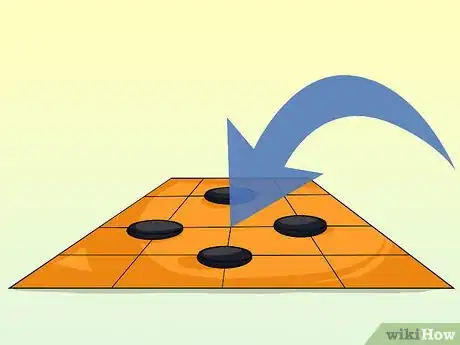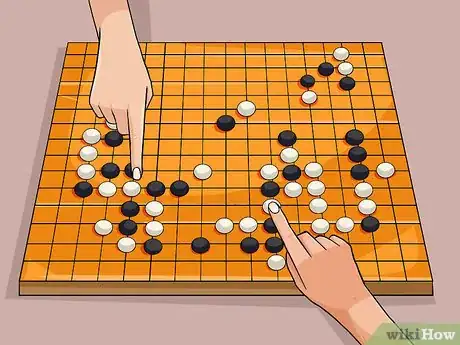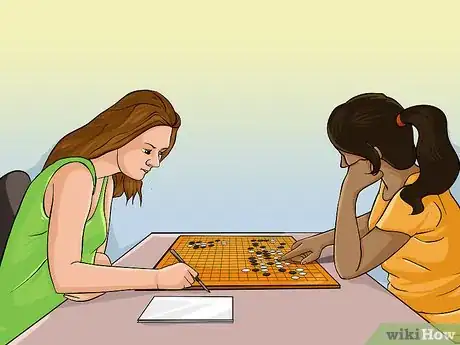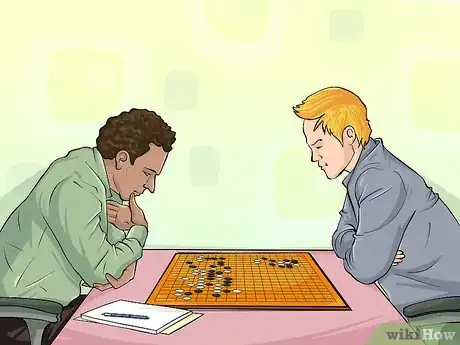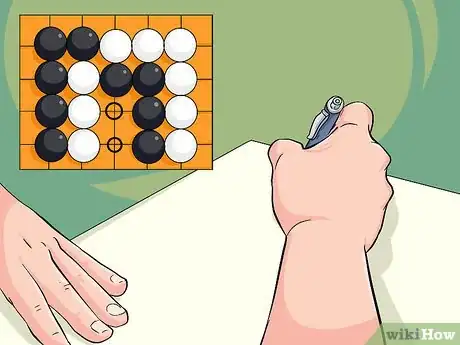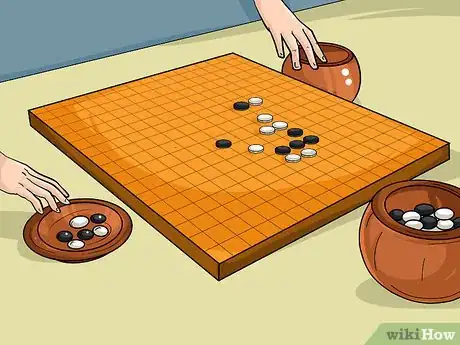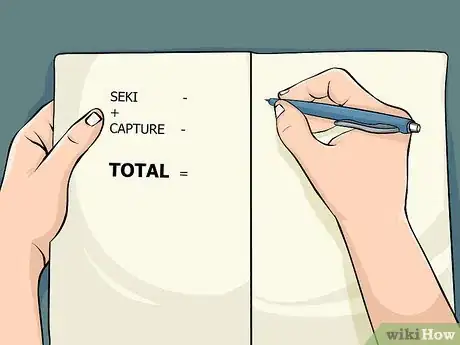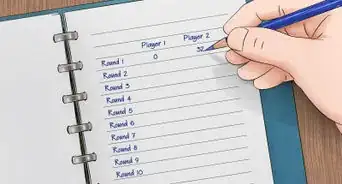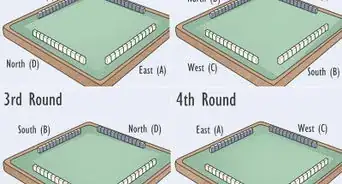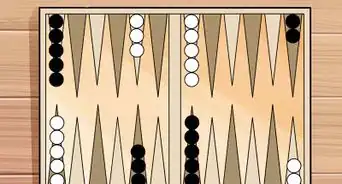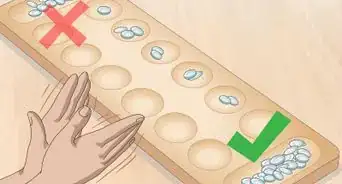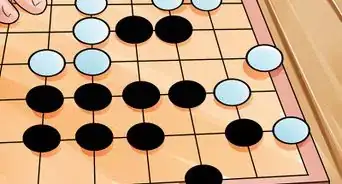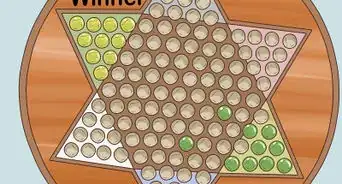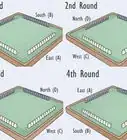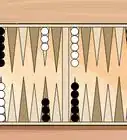wikiHow is a “wiki,” similar to Wikipedia, which means that many of our articles are co-written by multiple authors. To create this article, 10 people, some anonymous, worked to edit and improve it over time.
This article has been viewed 109,649 times.
Learn more...
Go is the popularized Japanese name for the ancient Chinese game of Weiqi, a deceptively difficult strategy game still played around the world. Figuring out your score for this game can be difficult. A game ends either when one player resigns, or both players pass their turns without placing pieces. After the game is over, you can either use Area Scoring or Territory Scoring to determine who won the game.
Steps
Using Area Scoring
-
1Wait until both players have passed play. A game of Go is not over until both players have passed play or when one player resigns. In Go, you pass play if you have no moves left. Therefore, if both players pass play, then there are no more good moves to be made and the game is over.
-
2Look for empty points on the board that your stones surround. The intersections or points in Go are worth one point each. Count up the points that you have surrounded with your stones.[1] If you have an area partially surrounded, then it is considered neutral and it does not count for a point. Write down the total number of points that you have.Advertisement
-
3Count the number of stones you still have on the board. After you have counted your points, you will need to count up your stones. Any stones that are left on the board may be included in this total. Write down this number after you have finished counting up all of your stones.[2]
-
4Add up your score and determine a winner. Once you have determined your total number of empty points and your total number of stones, add these two numbers together. Your total number is your final score. Compare your total score to your opponent’s total score to determine the winner.[3]
Using Territory Scoring
-
1Wait until both players have passed play. A game of Go is not over until both players have passed play or when one player resigns. In Go, you pass play if you have no moves left. Therefore, if both players pass play, then there are no more good moves to be made and the game is over.
-
2Look for empty points on the board that your stones surround. The intersections or points in Go are worth one point each. Count up the points that you have surrounded with your stones.[4] If you have an area partially surrounded, then it is considered neutral and it does not count for a point. Write down the total number of points that you have.
-
3Determine where your stones are in seki and count those stones.[5] Stones that are in seki are in danger of being captured, but they are nearby an opponent’s stones that are also in danger of being captured. Seki means mutual life. In a seki situation, neither player can move because the player who moves will lose stones.
- Look for areas on the board where you and your opponent have each other surrounded, but you only have one liberty each. Count the stones within this area and write down this number.
-
4Count the number of stones your opponent has captured. You will need to know the total number of stones your opponent has captured from you to get your score. These are the stones that have been removed from the board and set aside in a captured pile. Count up these stones and write this number down as well.[6]
-
5Add together the seki stone total and the captured stone total. Once you have determined your seki stone total and your captured stone total, you should add these two numbers together. Write down the total of these two numbers.[7]
-
6Subtract the seki/captured stone total from the empty points total. The last thing you need to do to get your score is to subtract your seki and captured stone total you’re your empty points total. The equation should look something like this: Empty Points – (seki stones + captured stones) = final score. Complete this equation using your numbers and then write down your answer.[8]
-
7Compare the numbers to see who won. After you and your opponent have calculated your scores, you should compare them to see who won the game. The player with the highest score is the winner. If you want to determine the margin of victory, then you can subtract the lower score from the higher score. Doing this just lets you know how many points you or your opponent won by.[9]
Community Q&A
-
QuestionIt takes too long to count surrounded points. Is there a quicker way?
 Eye of the ligerCommunity AnswerUsually it shouldn't take that long; the more you play the game the more walls you build. Part of the strategy of Go is to not box in giant areas, but to claim smaller spots. Counting your territory is the only way of finding out your score in Go.
Eye of the ligerCommunity AnswerUsually it shouldn't take that long; the more you play the game the more walls you build. Part of the strategy of Go is to not box in giant areas, but to claim smaller spots. Counting your territory is the only way of finding out your score in Go. -
QuestionWhat is half a point?
 Community AnswerHalf-points come from komi. Komi is a small bonus given to white, to cancel out the advantage black has when going first (as black always plays first in Go). The value of komi varies, but is never a whole number (ie. komi may be 4.5, 5.5, 6.5, etc). Due to this extra half-point, it is impossible to reach a draw in Go. So, half-points are added to komi to prevent draws.
Community AnswerHalf-points come from komi. Komi is a small bonus given to white, to cancel out the advantage black has when going first (as black always plays first in Go). The value of komi varies, but is never a whole number (ie. komi may be 4.5, 5.5, 6.5, etc). Due to this extra half-point, it is impossible to reach a draw in Go. So, half-points are added to komi to prevent draws.
References
- ↑ http://senseis.xmp.net/?Scoring
- ↑ http://senseis.xmp.net/?Scoring
- ↑ http://senseis.xmp.net/?Scoring
- ↑ http://senseis.xmp.net/?Scoring
- ↑ http://senseis.xmp.net/?Scoring
- ↑ http://senseis.xmp.net/?Scoring
- ↑ http://senseis.xmp.net/?Scoring
- ↑ http://senseis.xmp.net/?Scoring
- ↑ http://senseis.xmp.net/?Scoring
About This Article
Go is a complex Japanese strategy game, and if you’re scratching your head and wondering how to score it, here’s how. The game ends when neither of you can make a move or when one of you resigns. The simplest way to score Go is with area scoring. For this method, you get one point for each intersection that your stones fully surround and one point for each of your stones left on the board. The player with the highest score wins. Alternatively, use territory scoring, which uses area scoring plus a couple of other rules. First, count the number of stones in seki. Stones are in seki when they’re in danger of being captured, but they’re nearby an opponent’s stones that are also in danger of being captured. Add the number of stones in seki to the number of stones your opponent captured from you. Then, subtract this number from your area score. The player with the highest score wins. For more tips, including how to make sure your score is accurate, read on!

